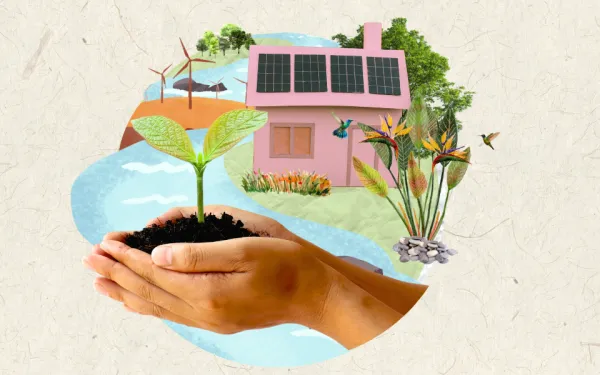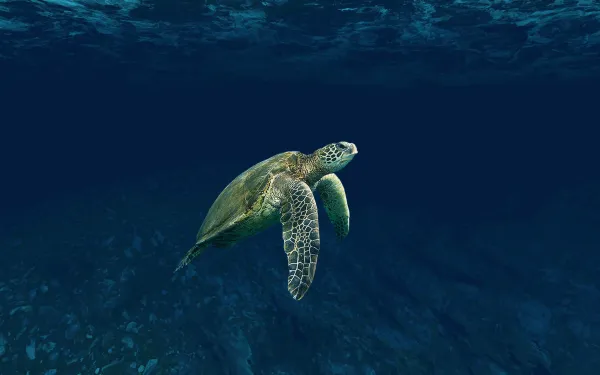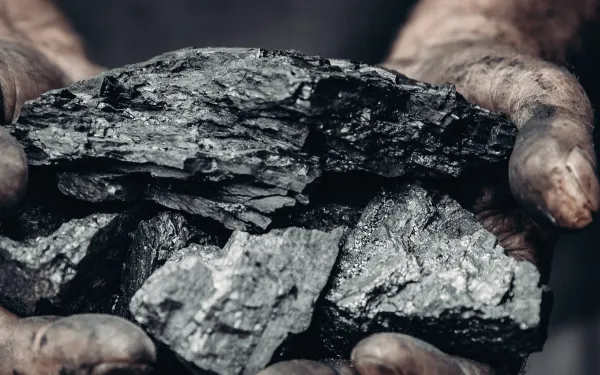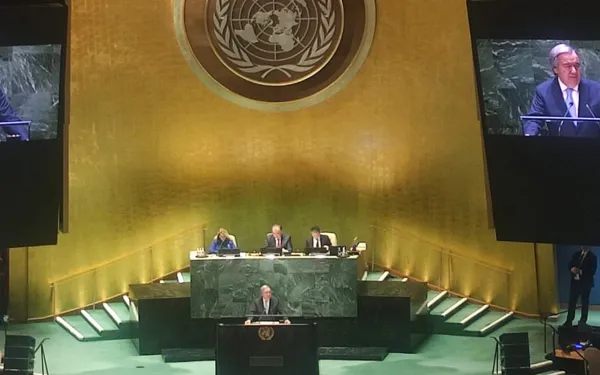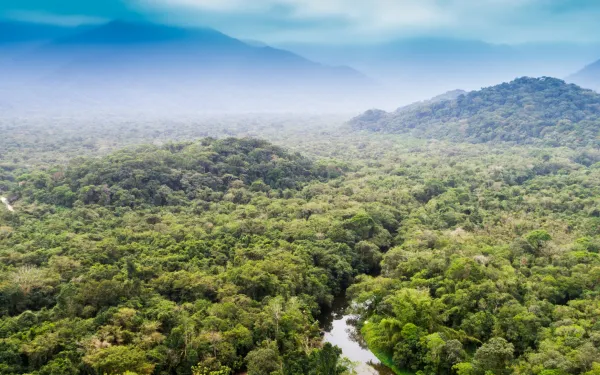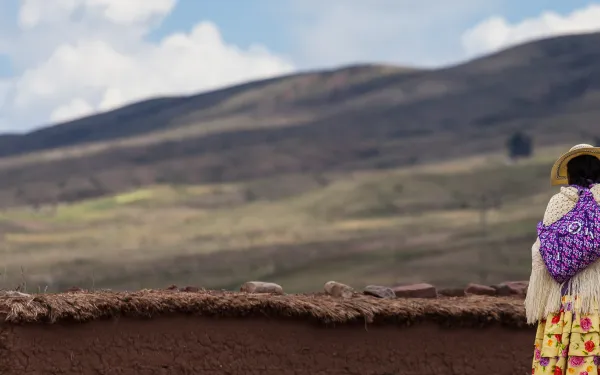The extraction, transport, use and export of coal to generate electricity are major causes of both the climate crisis and systematic human rights violations.
Forty-four percent of global carbon dioxide emissions from fossil fuels come from the use of coal, and the entire coal chain creates serious social, environmental and human rights impacts including forced displacement, water pollution and disease.
In its most recent report, the Intergovernmental Panel on Climate Change reiterated that, in order to avoid a catastrophic rise in the planet's average temperature, 80 percent of coal reserves must remain underground and that the use of coal for power generation must be phased out by 2050.
However, according to the International Energy Agency, coal consumption reached 8 billion tons for the first time at the close of 2022, representing a 1.2 percent growth in global demand. These figures could rise further in 2023 and stabilize in the following two years, according to forecasts by the energy arm of the Organization for Economic Cooperation and Development.
This is partly because, to cope with gas shortages due to the war in Ukraine, Europe plans to relax emission controls regarding fuels like coal. This contradicts the Glasgow Climate Pact (2021) in which States agreed to gradually reduce its use.
Latin America is no stranger to this situation. The region participates both in the burning of coal and in the extraction of the mineral which, after being exported, is used as a fossil energy source in other corners of the world. Colombia is the fifth largest coal exporter in the world and Mexico represents the fourteenth largest emitter of greenhouse gases.
Governments in the region therefore have a shared responsibility in global efforts to curb the exploitation and burning of coal in favor of energy systems based on non-conventional renewable sources that are sustainable over time and respectful of the environment and people.
The story of coal in Latin America, and the pressing need for decarbonization, can be told by taking a closer look at the cases of Chile, Colombia and Mexico.
Chile: progress and challenges of decarbonization
In Chile, coal-fired power generation is the main cause of serious impacts on the ecosystems and the health of people living in so-called Sacrifice Zones.
Historically, pollution from coal-fired power plants—there were, at one time, 28 in operation—has been concentrated in these geographic areas, resulting in toxic air and one of the country’s greatest socio-environmental problems.
In recent years, the Andean nation has seen progress toward the decarbonization of its electricity sector. Between October 2021 and September 2022, 27.5 percent of Chile’s electricity came from solar and wind sources—representing the first time renewables surpassed coal use, which fell to 26.5 percent after being the main source for more than a decade.
In 2019, the Chilean government committed to closing all coal plants by 2040. Since that public announcement, the timetable has been accelerating. The initial proposal was to close eight thermoelectric plants by 2024 and the remaining 20 by 2040. Now, 65 percent of the plants are scheduled to close by 2025. A bill approved in June 2021 by the Chamber of Deputies and Chamber of Deputies backed the change, which now awaits Senate endorsement.
Despite the progress, some experts say that Chile’s roadmap may not be entirely feasible and could increase diesel use in the short term. There is also an imminent risk that rapid decarbonization becomes an excuse to increase the use of gas, ignoring its risks and its role in the country's greenhouse gas emissions.
In fact, the government has committed to carbon neutrality by 2050 based on scenarios that include an increased use of gas, but fail to recognize a greater use of diesel.
Moving forward, it’s important that Chile’s decarbonization plan contains provisions to prevent continued and increased use of gas. On the contrary, a progressive plan must promote the implementation of renewable energies, encourage distributed generation and increase energy efficiency.
A comprehensive plan must also include measures to adequately address energy poverty, and to relocate and reemploy people who lose their jobs due to the energy transition. Only then will it be truly responsible and fair.
Colombia: the damages of coal mining and exports
Colombia is the world's fifth largest coal exporter, with only 8 percent of the extracted coal being used for domestic consumption.
Coal is the mineral that contributes most to the national economy, accounting for more than 80 percent of mining royalties. Yet poverty levels in the departments where 90 percent of the extraction takes place—La Guajira and Cesar—far exceed the national average.
Much of Colombia’s coal extraction occurs in El Cerrejón, the largest open-pit coal mine in Latin America. Its operation and growth over the last 40 years has destroyed rivers, streams and endemic ecosystems like the tropical dry forest; polluted the air, causing serious health consequences; and continuously violated the rights of Wayuu, Afro-descendant and rural populations in La Guajira.
At the 27th UN Conference on Climate Change (COP27), the current Colombian government announced its intention to reduce the exploitation of fossil fuels and undertake a gradual energy transition. However, to date, the climate impacts of coal mining have not been evaluated, no legislation has been passed on the closure of mines currently in operation, and there’s a lack of certainty around the future growth (or not) of the 1,774 existing coal-focused titles or new investments in the sector.
At the same time, Germany has increased its imports of Colombian coal due to the scarcity of gas in Europe. And purchases from the European market increased between January and November 2022, although Asia and the Americas are still the main buyers of the Colombian mineral.
These exports demonstrate that the impacts of burning coal anywhere in the world are global—just as multinational corporations have a responsibility in the human rights violations derived from their coal mining in Colombia, the Colombian government has a responsibility in the aggravation of the climate crisis due to coal’s extraction and sale.
Achieving a just transition in Colombia requires—among other things—building inclusive and participatory spaces, developing and implementing standards for the responsible closure of coal mines, and creating policies that allow for the adequate economic and social reconversion of those people most affected by the process.
Mexico: the backlash of betting on coal and other fossil fuels
In 2020, coal-fired power plants produced 10 percent of Mexico’s electricity and emitted 22 percent of the energy sector's total greenhouse gases, according to calculations by the Mexico Climate Initiative. Coal production and electricity generation from the mineral are concentrated in the state of Coahuila, where 99 percent of Mexico's coal is mined in just five municipalities.
The origins and cultural identity of this region lie in coal mining, which dates back more than 200 years and still sustains the economy of 160,000 people. At the same time, the coal business has brought air and water pollution, disease and death. According to the historical record kept by victims' families, since coal mining began, more than 3,100 miners have died in the area.
Two of the three coal-fired power plants operating in the country are in Coahuila; the other is in Guerrero and is fueled by imported coal. Those two plants consume almost half of the mineral extracted in the region and create more than 60 percent of the energy. Air pollution from burning coal causes around 430 deaths a year in Coahuila from respiratory diseases, according to the Centre for Research on Energy and Clean Air.
According to 2019 data, Mexico is the 14th largest emitter of greenhouse gases globally—69.5 percent of its emissions come from the energy sector. Under the current government, energy policy shifted from expanding renewable energy projects to prioritizing the use of fossil fuels and promoting state dominance through the Federal Electricity Commission (CFE) and the state-owned petroleum company PEMEX. In fact, in 2022, coal-based energy production in Mexico increased 63 percent from the previous year.
Environmental organizations have pointed out that "prioritizing electricity generation from CFE plants implies guaranteeing the burning of more coal and fuel oil indefinitely, and the development of new fossil gas infrastructure, which would tie us to US gas imports or the development of fracking projects in the north of the country with the consequent negative social and environmental impacts."
It’s clear that Latin America has a role in the extraction and use of coal, as well as in its social and environmental impacts.
For the region, a just transition towards other forms of energy generation must take into account the particularities of each country, be orderly and have a human rights and gender approach.
This implies, among other things: considering the local communities that depend on the coal chain; designing policies to identify and manage the economic and social impacts of the transition; placing alternatives to coal at the center of the discussion; and developing broad and participatory decision-making processes with an active role for the urban and rural population.
To achieve this, governments must take decisive action to ensure compliance with their climate and human rights commitments.
Read more 